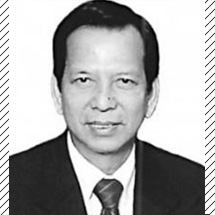By Ignacio Bunye
As seen on the December 2019 issue of The Philippine Sentinel
I was raised inside the Bureau of Prisons in Muntinlupa. I studied at the Itaas Elementary School and later at the Muntinlupa National High School. I grew up with children of prison employees. I knew and interacted with prisoners up close. One of them, I found out many years later, was a convicted cop killer.
My growing-up years — from 1945 to 1960 — coincided more or less with the term of my father, Dr. Alfredo M. Bunye, Sr., who served as a pre-war penal superintendent in charge of the New Bilibid Prison, up to 1954 when he became director of prisons.
My recollection as a toddler was the Guards’ Quarters. The ground floor was home to unmarried prison guards. The entire second floor was the official residence of my father who was [prison] superintendent.
From our second-floor window, I had a clear view of the façade of the iconic white edifice which was the National Bilibid Prison. The prison’s compound occupied a nine-hectare lot, which housed prison dormitories, ideally built for 3,000 convicts. It also housed the administrative offices, a prison hospital, and a prison chapel.
Except for a failed prison break which occurred sometime in 1950 and the prison gang’s rivalry in 1954, life inside the prison walls was relatively quiet. Both prison employees and prisoners attended the same masses inside the prison compound. The employees normally occupied the front rows, while the prisoners occupied the back rows. We received communion from prison chaplain Benedicto Arroyo.
Illiterate prisoners were encouraged to enrol in adult education classes. Later, a high school and a college were established inside the prison in cooperation with the Perpetual Help College system.
Prisoners with higher academic training served in offices. Those with good conduct were allowed to do household chores in employee households.
The prison hospital had adequate facilities, serving both employees and prisoners. My three siblings were all born inside the prison hospital, which at one time was headed by Dr. Bienvenido Alcantara. His wife, Dra. Avelina Alcantara, was a beloved figure, respected by prisoners. She could walk among prisoners, unescorted, at any time of day or night.
Prisoners had regular sports events. Many excelled in boxing and softball. Movies were shown regularly in open theatres, inside and outside the compound. During Christmas, movie personalities would have shows inside the compound. Ma Mon Luk, the Mami King, regularly gave away boxes of his famous siopao.
Prisoners were known for their excellent handicraft and wood work skills. Inside Malacañang Palace, one can find a huge rectangular table made partly of narra and partly of mahogany. The table was made by prisoners way back in 1937. It was a gift by former Prisons Director Eriberto Misa to President Manuel Quezon.
The road which led to the main prison was lined with decades-old mahogany trees. The Director’s Quarters, a pre-war structure, was made of the finest wood and had intricately-adorned furniture made by prisoners. The quarters had a Japanese-style pond, a 20-meter pool, a social hall, and had a large orchard of fruit-bearing trees.
Writer Romeo Virtusio wrote a very nostalgic account of his boyhood years ━ “Bilibid: growing up beneath prison walls.” In his foreword, National Artist Bienvenido Lumbera said the book described that period “when life in the early years of the present republic was relatively free of the frenzy of the Philippines of the 21st century.”
Decades later, it became difficult for me to comprehend and accept what has happened to the Bilibid of my youth — once ranked as among the best-run reformatory institutions in Asia. Ω
Editor’s note: Mr. Ignacio Bunye is a retired member of the Monetary Board of the Central Bank of the Philippines and later became Mayor of Muntinlupa City. An alumnus of Ateneo de Manila University, he now serves as a director of the Bank of the Philippine Islands.
